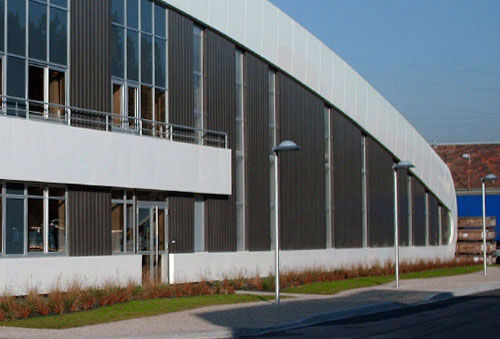Building a home is a significant investment, and it is essential to ensure that you are constructing a property compliant with the latest energy efficiency standards. One such standard is the RT 2020, a French regulation that focuses on the energy performance of new buildings. This article will guide you through the different aspects of building a home to RT 2020 standards. It will cover major topics such as obtaining the necessary permits, ensuring accessibility, meeting construction requirements, and adhering to energy efficiency standards.
Obtaining the Necessary Permits
Before you can begin construction on your new home, you must obtain the required building permits. These permits ensure that your project complies with local regulations and standards, including the RT 2020.
- File the application: To obtain a permit, you will need to file an application with your local planning authority. This application usually requires submitting detailed plans of your project, including floor plans, elevations, and site plans.
- Include energy efficiency documentation: As part of your application, you will also need to include documentation demonstrating that your project meets the RT 2020 energy efficiency requirements. This documentation may include an energy performance assessment, as well as any relevant certifications or calculations.
- Wait for approval: Once you have submitted your application, it will be reviewed by the planning authority. This process can take several weeks or even months, depending on the complexity of your project and the workload of the planning authority. Be prepared to answer any questions or provide additional information during this time.
- Begin construction: Once your application has been approved, you can begin construction on your new home. Keep in mind that you will need to follow the approved plans and any conditions specified in your permit, including the energy efficiency requirements of the RT 2020 standard.
Ensuring Accessibility
When building a home to RT 2020 standards, it is essential to consider accessibility. This means ensuring that people with disabilities can easily access and navigate your property. Here are some aspects to consider when designing an accessible home:
- Entrances and exits: Ensure that entrances and exits are wide enough for wheelchair users and have ramps or lifts if needed. Also, consider installing handrails and non-slip surfaces for added safety.
- Corridors and doorways: Wider corridors and doorways can make it easier for wheelchair users to move around the home. Consider installing doors with a minimum width of 80 cm for comfortable wheelchair access.
- Bathroom facilities: Accessible bathrooms should have grab bars, a roll-in shower or a bathtub with a transfer seat, and enough space for wheelchair users to maneuver.
- Kitchen facilities: Design your kitchen with accessible countertops, sinks, and appliances. Ensure that there is enough space for wheelchair users to maneuver and reach cabinets and appliances.
- Parking: Provide accessible parking spaces close to the entrance of your home. These spaces should be larger than standard parking spaces to accommodate wheelchair vans and other mobility aids.
Meeting Construction Requirements
To build a home that meets RT 2020 standards, you must adhere to specific construction requirements. These requirements cover various aspects of your home, such as the building envelope, insulation, ventilation, and heating systems. Some key requirements include:
- Building envelope: The building envelope is the outer shell of your home, which separates the interior from the exterior environment. To meet RT 2020 standards, your home’s envelope must be well-insulated and airtight to minimize heat loss and maintain a comfortable indoor temperature.
- Insulation: Your home’s walls, roof, and floors must be adequately insulated to minimize heat transfer. This can be achieved by using high-quality insulation materials, such as mineral wool, cellulose, or expanded polystyrene.
- Ventilation: Proper ventilation is essential for maintaining good indoor air quality and preventing moisture buildup, which can lead to mold and other health issues. Your home should have a well-designed ventilation system, such as a heat recovery ventilator (HRV) or an energy recovery ventilator (ERV), which can help to maintain a healthy indoor environment while maximizing energy efficiency.
- Heating systems: Your home’s heating system should be energy-efficient and capable of maintaining a comfortable indoor temperature. Consider using renewable energy sources, such as solar panels or heat pumps, to power your heating system.
- Windows: Ensure that your windows are double or triple-glazed with low-emissivity (Low-E) coating to minimize heat loss and improve energy efficiency. Additionally, make sure that your windows are properly sealed to prevent drafts.
Adhering to Energy Efficiency Standards
RT 2020 emphasizes the importance of energy efficiency in new buildings. To meet these standards, your home must have a low energy consumption and utilize renewable energy sources. Here are some ways to achieve this:
- Passive design: Incorporate passive design strategies, such as proper building orientation, natural daylighting, and shading, to minimize your home’s energy consumption.
- Renewable energy: Incorporate renewable energy sources, such as solar panels, wind turbines, or geothermal heat pumps, to generate electricity and heat for your home.
- Energy-efficient appliances: Choose energy-efficient appliances, such as ENERGY STAR-certified products, to minimize your home’s energy consumption.
- Smart home technology: Use smart home technology, like programmable thermostats, lighting controls, and energy monitors, to optimize your home’s energy use.
- Energy performance assessment: Regularly assess your home’s energy performance to ensure that it meets the RT 2020 standards. This can be done by conducting an energy audit or using energy modeling software.
Considering Additional Aspects of Sustainable Living
In addition to energy efficiency, there are other aspects of sustainable living that you should consider when building a home to RT 2020 standards:
- Water conservation: Implement water-saving measures, such as low-flow fixtures, rainwater harvesting, and greywater recycling systems, to minimize your home’s water consumption.
- Sustainable materials: Use sustainable, eco-friendly building materials, such as reclaimed wood, recycled metal, and low VOC paint, to reduce your home’s environmental impact.
- Indoor air quality: Use low VOC paints, finishes, and adhesives, as well as natural fiber carpets and furniture, to improve your home’s indoor air quality.
- Waste management: Establish an efficient waste management system, including recycling and composting facilities, to minimize your home’s waste production.
By following these guidelines and adhering to the RT 2020 standards, you will not only create a comfortable and efficient living environment but also contribute to a more sustainable future.
Incorporating Universal Design Principles
When building a home to RT 2020 standards, incorporating universal design principles can be an essential factor in ensuring accessibility for all. Universal design aims to create environments that are usable and appealing to everyone, regardless of their age, size, or ability. Here are some key principles to keep in mind:
- Accessible route: Establish an accessible route throughout your property, connecting dwelling units, common spaces, and public areas. This route should be smooth, wide, and free of obstacles, allowing for ease of navigation for individuals with disabilities.
- Dwelling units: Design your home with a suitable number of dwelling units accessible to wheelchair users, as per the building code requirements. Ensure that these units have appropriate features, such as wider doorways and accessible bathroom facilities.
- Wheelchair spaces: Provide designated wheelchair spaces in shared spaces like living rooms and dining areas, ensuring comfort and ease of use for wheelchair users.
- Drinking fountains: If installing drinking fountains in your property, ensure they are accessible to individuals with disabilities by providing lower-height fountains, as well as clear floor space for wheelchair users.
- Work areas: Design work areas, such as home offices or workshops, to be accessible to all users. Consider providing adjustable workstations, sufficient maneuvering space, and accessible storage.
- Standard plans: When developing your building plans, ensure they comply with the building code requirements for accessibility, including the total number of dwelling units accessible, accessible entrances, and paths of travel.
Building an RT 2020 Compliant Home
Constructing a home that meets the RT 2020 standards requires careful planning and execution, from obtaining the necessary building permits to incorporating accessibility and universal design principles. By following these guidelines and adhering to the RT 2020 requirements, you can create a comfortable, energy-efficient, and accessible living environment that caters to the needs of all residents, including those with disabilities.
By prioritizing sustainable living and energy efficiency, you will not only enjoy a more cost-effective and eco-friendly home but also contribute to a more sustainable future for the community and the environment. Take the time to research and implement cutting-edge technologies and materials to ensure your home is built to last and meets the highest standards of accessibility and energy efficiency. Your dedication to these principles will provide a lasting legacy for future generations to appreciate and emulate.

